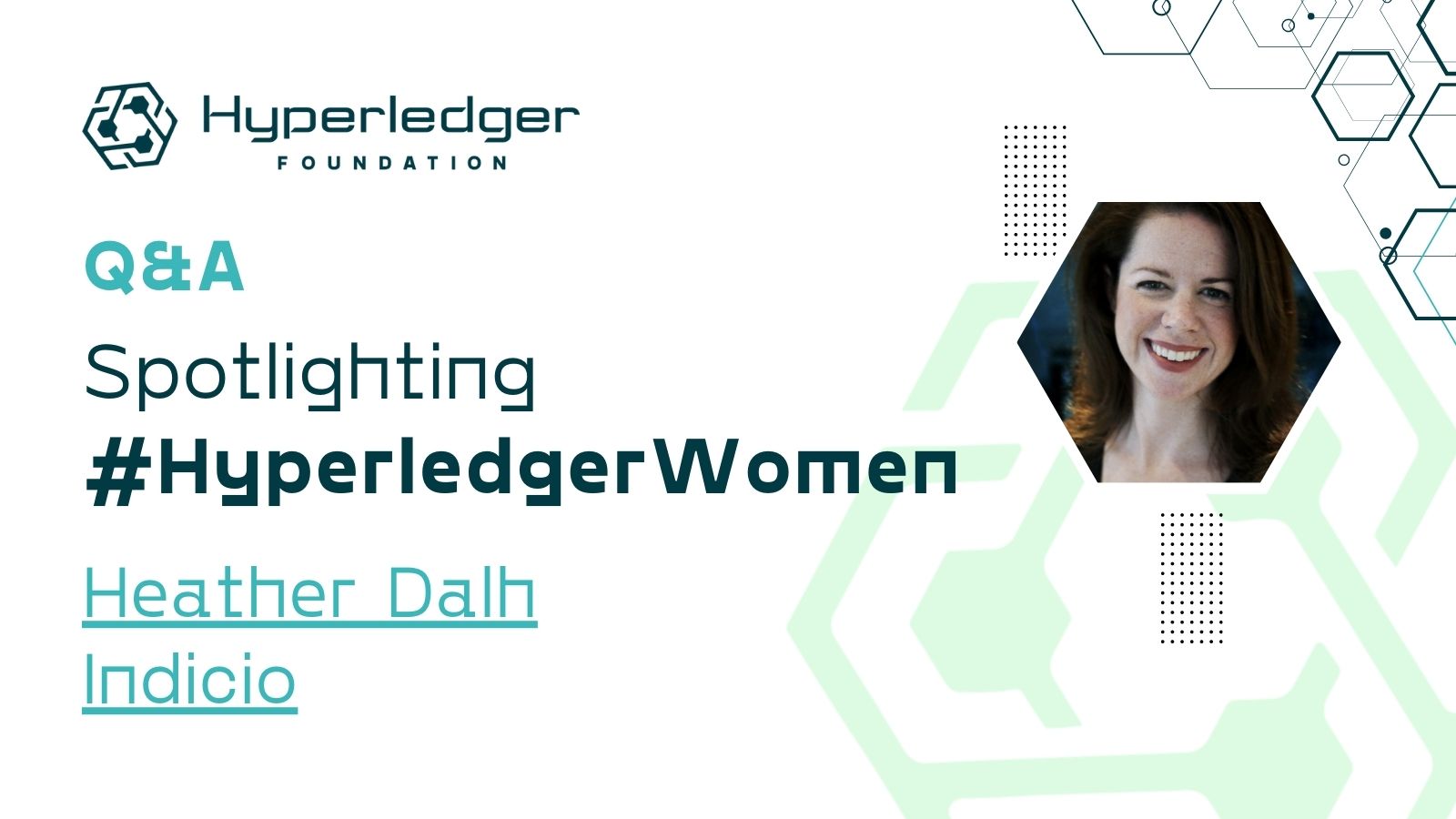Spotlighting #HyperledgerWomen: Stories from front lines of community building—Heather Dahl, Indicio

To celebrate #HyperledgerWomen and their contributions to our community, we are asking a cross section of the many women leaders in our community to share stories about their careers, what brought them to the blockchain space, what projects they’re excited about and advice they’ve received or have to share. In this series, we will share stories from a diverse group of #HyperledgerWomen who are driving progress in our community, and in the industry at large.
Today we hear from Heather C. Dahl, CEO of Indicio.
What brought you into the blockchain space?
I’ve been involved in digital identity and privacy for over a decade. All paths led to decentralized identity as the solution to the challenge of identity verification — and blockchain is a key part of that solution. When we launched Indicio in 2020, one of our first goals and achievements was to launch a Hyperledger Indy-based network that was capable of supporting enterprise-grade solutions. We’ve built the Indicio Network into a global suite of networks to satisfy any and all developer needs.”
Why do you believe in blockchain technology and in what ways do you think it will change the way that we live and work?
Distributed ledger technology is a core component in creating a verification layer for digital interaction based on decentralized identity and using verifiable credentials. It is difficult to understate the need for this verification layer. It’s not just about correcting a theoretical defect in the internet when it comes to identifying people and things; it’s about the unsustainable cost of fraud, and it’s about the ability to source identity and trust data in a massively scaled digital world of connected devices, digital twins, and omnipresent AI. The developments in natural language processing over the past few months alone signal the urgency for an infrastructure capable of generating trust in interaction. Blockchain helps to deliver this.
Why is digital identity important for a decentralized future?
The digital realm is a dimension of life that we increasingly inhabit and rely on to make the physical dimension work. Parsing what this means for our hybrid reality means stepping back from the ubiquity of digital interaction and — to borrow an Orwellism — seeing what’s in front of our face. Digitally, it’s the mystery of identity. Who am I dealing with? How can I trust that they are who they say they are? How can I trust their data? We’ve had thousands of years to figure out how to do this in the physical world but these processes don’t yet work well online. A physical passport is engineered to be hard to copy but that gets lost in translation to the digital realm — until now. The combination of technologies in decentralized identity are capable of inscribing origin and uniqueness into digital information, of rendering it verifiable. As this verification is frictionless, you now have immediately actionable data, which is the building block for seamless digital processes. And you can verify without sacrificing privacy. And you can interact over encrypted peer-to-peer channels. Now, as this technology is interoperable, you can take your identity — really, any information that can be rendered in a digital credential — and use it anywhere.
What projects that you are working on get you most excited?
Right now, our work with SITA on an implementation of a digital travel credential (DTC) following the International Civil Aviation Organization (ICAO) DTC standards is a showcase for how verifiable credential technology creates seamless experiences. Imagine a world where you can check in at home and then use a digital credential to board your plane, cross a border, and enter your hotel room without friction. That’s the world we’re building. I’m also excited about using the same technology to transform financial interactions, which we’ve done with the recent launch of Indicio Proven Finance. Imagine being able to prove you are an account holder with a verifiable credential instead of a login, password, and multi-factor authentication. Just think what this will do for payments, and what a KYC credential will do for mortgage applications and for seamless third-party financial services. This is a technology that benefits business, government, and consumers because it makes everything simpler and more secure.
What has your experience been like as a woman in the blockchain space and in tech more broadly?
I could write the response that everyone expects because the cliches are cliches for a reason: they’re true. Instead, I’ll say this: My goal as a CEO at Indicio was and is to build a diverse company. That can be a challenge for a startup as, after all, our resources are not those of a global enterprise. Nevertheless, it has been a priority to recruit and retain women in the company and especially in engineering. The key, here, is to provide the mentoring and model the teamwork needed for each employee to succeed.
What advice do you have for women looking in open source development/communities?
Get involved. These communities are both very welcoming and very appreciative of anyone who wants to contribute. So the simple message is, “push yourself.” Work on community challenges and volunteer to take leadership roles. The more you give, the more you will get; the more everyone benefits—not least other women entering the field who will see what you do as normal.
What was the best advice someone gave you?
“Build, build, build.” Seriously, it has been my guiding mantra at Indicio. We learn by building and implementing and this is especially true for an emerging technology where there isn’t an instruction manual or roadmap.
Sign up for the monthly Hyperledger Horizon & /dev/weekly newsletters
By signing up, you acknowledge that your information is subject to The Linux Foundation's Privacy Policy